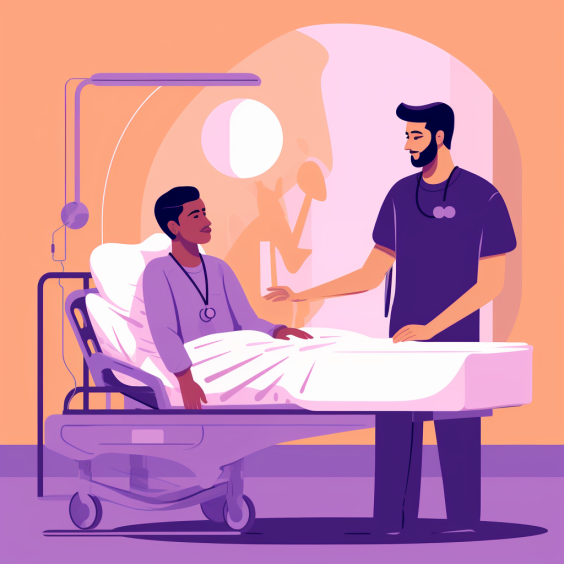Brain injuries can be life-altering events, and in many cases, patients require long-term care and support to maintain their quality of life. For families and caregivers, understanding the landscape of long-term care facilities for a loved one with a brain injury is an important step. This article aims to provide important information on long-term care facilities for brain injury patients, the services typically required, and the various options that may be available.
Brain Injuries and Long Term Care
A brain injury can result from various causes, including traumatic events such as a car accident or a fall, or non-traumatic events like a stroke or brain tumor. The severity of the injury and the specific areas of the brain affected determine the level of care required (National Library of Medicine). Patients with brain injury often need specialized care to address their cognitive, emotional, and physical needs. Long-term care facilities for patients with brain injuries are designed to provide a structured environment where patients can receive the support they need to live as independently as possible.
Long-term care is essential for many brain injury patients, as it ensures their ongoing needs are met and supports their recovery process. Families and caregivers must understand the long-term effects of a brain injury, as this knowledge will help them make informed decisions about the most suitable care facility for their loved one. Different types of long-term care facilities cater to different needs, and each facility may offer varying levels of care and support. It is important for a facility to be able to accommodate the specific needs of a patient and offer the level of care typically required for their condition.
What Services do Patients with Brain Injuries Need?
The services that patients with brain injuries might need can vary based on the individual circumstances of their injuries. Typically, these patients may require assistance with activities of daily living (ADLs), such as bathing, dressing, and eating. Cognitive and emotional challenges, including memory, problem-solving, and emotional regulation, are also areas where support might be necessary (National Library of Medicine). Some individuals may benefit from therapies such as physical, occupational, or speech therapy to help regain and improve functionality. An assessment of needs is a critical step in understanding the level of care and types of services that could be beneficial.
Medical care needs might include medication management, wound care, and chronic condition monitoring. Specialized care facilities often provide on-site medical services, which can be a factor in the overall care plan for an individual with a brain injury. Psychological support and counseling are other facets of care that might play a significant role in helping individuals cope with the changes and challenges following a brain injury.
Social support and recreational activities are also considered valuable for mental and emotional well-being, providing patients with opportunities for social interaction and engagement in meaningful activities. Facilities with strong programs in these areas may contribute positively to an individual's quality of life.
1. Rehabilitation
Rehabilitation can be a key part of recovery for those with brain injuries, with programs often designed to help individuals regain skills and function to their highest potential (Centre for Neuro Skills). A multidisciplinary approach is common, addressing physical, cognitive, and emotional aspects of recovery.
Physical therapy can help in regaining strength and mobility, focusing on exercises that target areas impacted by the brain injury. Occupational therapy may assist in redeveloping skills for daily living and work, while speech and language therapy might be necessary for those with communication challenges. Cognitive therapy could be part of a program, aimed at improving memory and executive functions.
2. Continued Care Programs
Continued care programs may support brain injury patients in maintaining and building on rehabilitation progress (Centre for Neuro Skills). These programs might encompass outpatient services, community-based activities, and support groups, providing varied forms of continued support.
Outpatient services can facilitate ongoing therapy, while community programs might offer structured activities and support in a community setting. Support groups are a platform for shared experiences and emotional support, which can be a resource for individuals and families coping with brain injuries.
3. Assisted Living
Assisted living facilities can be a residential care option for those who require assistance but not the intensive level of care a nursing home provides (Brain Injury Center). These facilities often focus on maintaining resident independence while offering needed support.
When exploring assisted living options, it may be useful to consider a facility's experience with brain injury patients and their ability to meet specific needs, which might include staff training and environmental adaptations to support cognitive and physical challenges.
4. Residential Care
Residential care facilities offer structured environments for individuals who need significant support and supervision (Brain Injury Center). They typically have higher staff-to-patient ratios and may offer specialized therapy services and programming.
In evaluating residential care options, the level of care and the facility's capability to meet an individual's specific requirements are important considerations, as well as recreational and social activities, which can influence a patient's well-being.
5. Nursing Homes
Nursing homes may provide care for individuals who have extensive medical or functional needs (NursingHomeAbuseGuide.org). They usually offer comprehensive nursing care and support with ADLs.
These facilities might also provide therapy services to help maintain and improve function. As you consider nursing home options, verifying their experience with brain injury care and available specialized services can be an important part of the process.
6. Finding the Right Care for You or Your Loved One
Selecting a long-term care facility involves evaluating specific needs and preferences. It may be helpful to research and visit potential facilities to assess their suitability, inquire about staff expertise with brain injury care, and understand their therapeutic offerings.
Consulting healthcare professionals who understand the patient's needs, and talking with other families with similar experiences can also provide perspectives that may inform the decision-making process.
Resources
There are numerous resources available to help families and caregivers navigate the process of finding long-term care for a loved one with a brain injury. Organizations such as the Brain Injury Association of America (BIAA) and the National Institute on Disability, Independent Living, and Rehabilitation Research (NIDILRR) offer information on brain injuries, long-term care options, and support services (National Library of Medicine). Additionally, local brain injury associations and support groups can provide guidance, resources, and emotional support for families and caregivers throughout the care planning process.
State and federal government agencies, such as the Administration for Community Living (ACL) and the Centers for Medicare & Medicaid Services (CMS), also provide resources and information on long-term care options and services for individuals with disabilities, including brain injury patients. These agencies can help families navigate the process of finding and financing long-term care for their loved one.
Utilizing available resources and considering the specific needs of brain injury patients can support informed decision-making about long-term care options. Finding the right care setting can significantly impact the patient's overall well-being and quality of life, supporting their recovery journey and promoting their independence.
Conclusion
Finding the appropriate long-term care facility for a loved one with a brain injury requires thorough research, evaluation of various options, and consultation with healthcare professionals and other families who have faced similar challenges. Ultimately, the goal is to identify a care setting that will meet you or your loved one’s unique medical, functional, and emotional needs, promoting their well-being and enhancing their quality of life.
When evaluating long-term care options for you or a loved one, consider the facility's experience and expertise in caring for others with brain-injury related conditions, the availability of specialized therapy services, and the support provided for cognitive and emotional challenges. By taking the time to make an informed decision, families and caregivers can help ensure that their loved one receives the highest quality care and support as they navigate the journey of recovery and rehabilitation.
It is important to note the value of patience and flexibility throughout this process, given that the needs of patients with brain injuries can evolve. Staying informed, engaged, and ready to adapt to changing needs can play a significant role in the journey of recovery and well-being for individuals with brain injuries.








